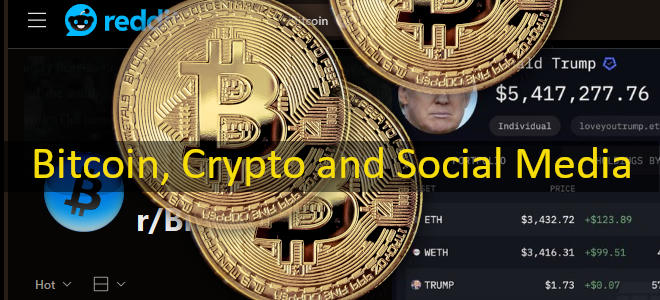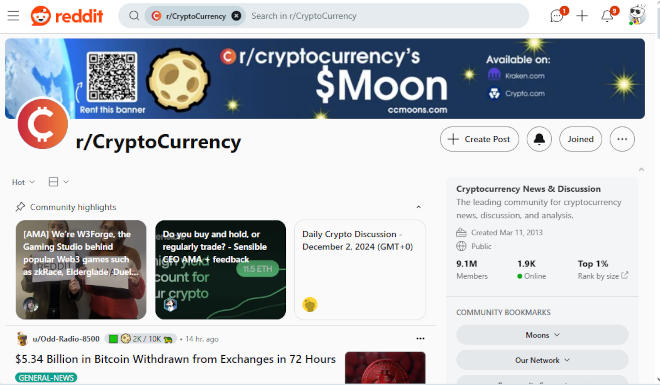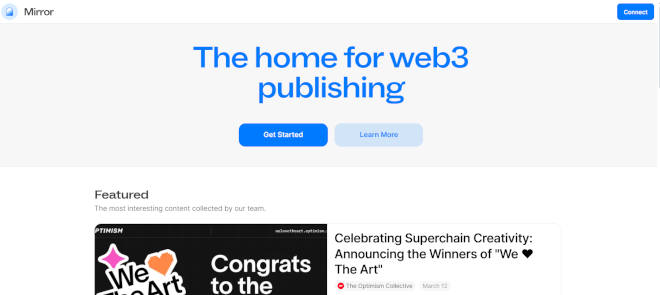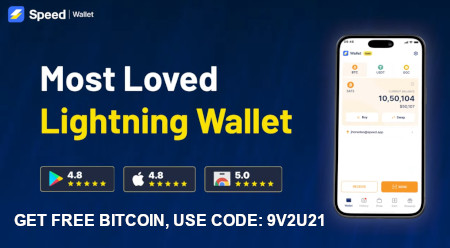Bitcoin and other crypto currencies have been all the rage since Donald J. Trump won the US presidential election last month.
Trump has also appointed the world’s richest man Elon Musk to a new role focused on improving US government efficiency. Musk, along with former Republican presidential candidate Vivek Ramaswamy will co-lead the newly established Department of Government Efficiency (Yes,.. DOGE).
Since then Bitcoin, DOGE, Ethereum, XRP and pretty much every other crypto have been rising substantially!
So, let’s have a look what is happening on social media with crypto.
As you might have guessed crypto and social media are increasingly intertwined in today’s digital landscape. Social media platforms play a significant role in shaping the cryptocurrency market, influencing investor behavior, driving awareness and adoption.
Here are some key ways these two exciting worlds interact, and sometimes collide.
Social Media As A Source Of Crypto News
Yes, we know social media might not be the most reliable forum for your everyday news, but social platforms such as Twitter, Reddit and Telegram are major sources of cryptocurrency news and updates. Influential figures including developers, web agency blockchain marketing, investors and celebrities often use these platforms to share opinions, news, or even pump certain coins. For instance Elon Musk’s tweets have been known to significantly affect the price of Bitcoin, Dogecoin and other cryptocurrencies.
Social media provides a real-time pulse on consumer sentiment allowing crypto businesses to monitor feedback and adjust their strategies accordingly. Positive reviews, viral content and influencer endorsements can quickly elevate their reputation, while negative sentiment can have a swift and damaging impact.
Reddit’s subreddit communities such as r/cryptocurrency, r/bitcoin or r/altcoin are useful hotbeds for discussions, predictions and of course rumors, often causing volatile swings in crypto prices.
Famous YouTubers and other crypto influencers often provide market analysis, tutorials and news. As some of them have substantially large follower bases they can sway public perception and investment behavior. Be careful with these as they can also be misleading and/or sponsored by various crypto projects such as ICOs.
Social Media Ads, Promotions, Scams And Fraud
Many cryptocurrency projects and companies use social media platforms to promote their Initial Coin Offerings (ICOs), airdrops and new tokens. This is done through paid advertisements, influencer marketing or organic content. Social media is also a channel where scams, fraudulent schemes and phishing attacks take place.
Crypto fraud on social media is a growing concern as more people engage with digital currencies and blockchain technologies. Social media platforms offer a convenient way for scammers to promote fraudulent schemes and target vulnerable individuals, often under the guise of investment opportunities, giveaways or exclusive insider information.
Here are 5 of the most common types of crypto fraud found on social media:
1. Ponzi and Pyramid Schemes
Scammers often promise massive returns on crypto investments, usually with the assurance that the returns will come from new investors rather than from actual trading or mining. These schemes work by paying early investors with the money from newer investors. Once the influx of new investment slows down, the scheme collapses, and investors lose their money.
2. Fake ICOs and Token Sales
In this scam fraudsters create fake ICOs or tokens and promote them through various social media platforms enticing investors to purchase new cryptocurrencies or tokens that do not exist or are worthless. They often use sophisticated marketing tactics, including influencer endorsements and fake whitepapers to make their offers seem legitimate. Unrealistic hype, unverified information about the project, and the lack of a clear team or technical details are common warning signs here.
3. “Pump and Dump” Schemes
In a pump-and-dump scam bad actors artificially inflate the price of a low-cap cryptocurrency through coordinated social media posts, then sell off their holdings at the inflated price. Once they’ve sold the price crashes and other investors who bought in during the hype lose their money.
4. Impersonation Scams
Scammers frequently impersonate well-known crypto influencers, celebrities or project founders to trick people into sending them money. These impersonations can take the form of fake social media accounts or hacked official accounts. Fraudsters often promise a “special offer” such as doubling the investment in exchange for sending crypto to a specific wallet.
5. Fake Crypto Airdrops and Giveaways
Scammers often promote fake airdrops or giveaways on social media claiming that users can receive free crypto by depositing small amount of funds or completing certain tasks. Once the scammer receives the funds or personal information the victim gets nothing in return.
Decentralized Community Building And Support
Cryptocurrencies are often associated with decentralized communities that gather on social platforms such as Discord, Telegram and Twitter. These communities are vital for discussing the future of various blockchain projects, making decisions on governance or coordinating efforts for things like staking or liquidity mining. Some projects use social media to engage the community in decision-making processes or crowdfunding campaigns. Decentralized Autonomous Organizations (DAO) use social media to gather support or hold votes on key decisions.
Decentralized Social Media Platforms – Web3 Social Media
As blockchain technology advances, decentralized social media platforms (Web3) are emerging. Web3 social media refers to decentralized social media platforms built on Web3 technologies, which leverage blockchain and other decentralized protocols to create new models for online interaction, content sharing, and ownership.
Traditional social media platforms are naturally controlled by central entities but Web3 social media platforms are built on decentralized networks, meaning no single organization has full control over the platform. This can reduce censorship and create a more transparent ecosystem.
Web3 platforms aim to give users more control over their data, privacy and content, as opposed to traditional social media, which is typically controlled by huge centralized corporations like Facebook, Twitter and Instagram.
In Web3 users can own their data, content and their digital identities. For example instead of uploading a photo or post to a central server, a Web3 platform might store it on a blockchain or decentralized file storage system like IPFS (InterPlanetary File System) ensuring that the users maintain control over their creations.
Many Web3 platforms incorporate digital tokens (cryptocurrencies) to incentivize content creators and users. These tokens can be used for tipping, rewarding content, governance (voting on platform decisions) or buying and selling digital assets like NFTs (Non-Fungible Tokens).
NFT Marketplace Integration And Social Media
Social media platforms like Instagram and X (Twitter) are incorporating NFT features allowing users to display their digital art or collectibles as profile pictures or posts. Creators are increasingly using NFTs and crypto to monetize their social media content from creating exclusive content to selling digital art. Crypto payments are being integrated into tipping or donation systems.
Some social media platforms have integrated tokens or NFTs into their ecosystems allowing creators to earn rewards in cryptocurrency or to create digital assets that can be traded or used across different platforms.
Examples Of Web3 Social Media Platforms
Here are a few good examples of popular Web3 social sites:
Mastodon: A decentralized, open-source microblogging platform that is part of the Fediverse (a network of interoperable decentralized social media sites). It allows users to create their own “instances” or communities with their own rules.
Steemit: A blockchain-based social platform that rewards users with cryptocurrency (STEEM) for creating and curating content. Users have a say in platform governance through voting mechanisms.
Lens Protocol: A decentralized social graph built on the Polygon blockchain, which allows users to own their social media profiles and carry them across multiple Web3 applications.
Audius: A decentralized music-sharing platform where artists can upload and monetize their music directly, without intermediaries.
Mirror: A decentralized publishing platform where writers and creators can publish content and interact with their audience, integrating with Web3 tools like NFTs and cryptocurrency payments.
In short Web3 social media represents a shift towards more user controlled, decentralized and privacy focused online interactions. It still faces significant hurdles in terms of mass adoption, usability and scalability though.
Crypto As Payment For Social Media Services
Using cryptocurrency as payment for social media services is an emerging concept and it could significantly alter how platforms handle transactions, user engagement and monetization. Social media platforms are slowly adopting Bitcoin, Ethereum, Polygon and other cryptocurrencies as payment methods for services like ads, premium accounts or content monetization. This allows users to pay directly in crypto for their social media activities or for supporting creators. Some projects are already experimenting with decentralized social networks where users interact with tokens. In such systems, users could earn tokens by posting content, engaging with others, or curating posts, with tokens representing value on the platform.
Conclusion
The relationship between crypto and social media is certainly dynamic and multifaceted. Social media is a powerful tool for driving crypto adoption, creating buzz as well as fostering communities. However, it also presents challenges in terms of fraud, regulation and misinformation. As both industries continue to evolve we can expect even more innovative intersections, such as decentralized social platforms and enhanced crypto integrations.
[Recommended reading: Emerging Social Media Platforms – The Next Big Thing]
[Image credits – Main image: Foap; other images, videos, infographics or screen prints are from their respective websites and/or social platforms or articles.]




